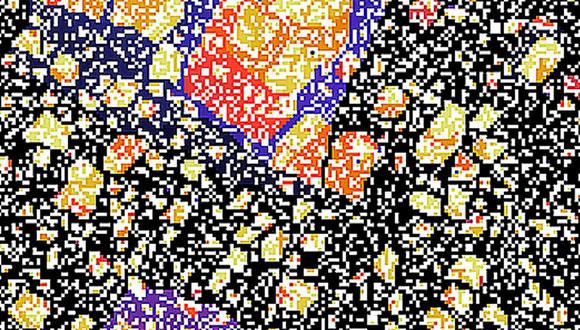Biological & Soft Matter Seminar: Physical mechanisms responsible for formation of bundles and networks of Keratin intermediate filaments
Ehud Haimov, TAU
Zoom: https://us02web.zoom.us/j/88904888353?pwd=dDIwaXRxSjlsVElkR0dXdTNPTGhnZz09
Abstract:
Keratin intermediate filament (KIF) are a family of intermediate filaments typically expressed in epithelial cells, where they form an intracellular network, spanning the entire cytoplasm. The KIF network includes two regions, (i) the peripheral region, characterized by the persistent flow of KIF from the cell’s edge, where the filaments nucleate, towards an interface between the cytoplasm and the nucleus, in which the matured bundles concentrate and, apparently, undergo disassembly; (2) the central region formed of thick KIF bundles, which in contrast to the peripheral one, is stationary over a long period of time. The thick bundles enter the central network region from the dense nucleus-cytoplasm interface surrounding the central network. Interestingly, experiments show that KIF self-assemble into finite-thickness bundles in-vitro without the presence of external agents, suggesting that bundling of KIF can be driven exclusively by intrinsic interactions between KIF.
In this work we inspected: (1) the bundling process of KIF and the forces that drive it, and (2) the preferred topology of the (“static”) central network, which corresponds to a free energy minimum.
We found that the experimentally observed sideway aggregation of KIF into stable finite-thickness bundles results from the interplay between repulsive electrostatic forces, screened by surrounding electrolyte media, and the short-range hydrophobic attraction. By investigating a range of physical parameters responsible for the magnitude of these interactions in K8/K18 KIF, we found three possible regimes: (1) either individual KIFs remain separated, or (2) the KIF assemble into a finite-thickness bundle, or (3) KIF ensemble collapses forming a single cluster. Focusing on the second regime, we determined the dependence of stable bundle radius on the hydrophobicity and on the measure of ion penetration in the bundle. Moreover, we evaluated the time it takes for single KIF on its way to merge with a bundle, to cross an (electrostatic) energy-barrier, and found it is of the order of seconds, which match experimental data.
Based on experimental images of KIF networks, we suggest that the central network is under negative tension, induced by the nucleus-cytoplasm interface which serves as reservoir of matter (of thick-bundles). The topology and stability of the network is then determined by the interplay between the bundling energy, which facilitates an increase in the overall length of bundles, and the junction energy, which tends to reduce the number of junctions and make them as symmetric as possible (angle-wise). Considering uniform hexagonal networks, we derived an analytical equation establishing the optimal junction density corresponding to the free energy minimum, defining the optimal size of the unit cell as a function of physical properties of KIFs. The study of disordered networks, based on simulations of a large ensemble of Voronoi tessellations, demonstrated that such networks can provide lower free energy than the regular hexagonal configurations, however their optimal average cell size is similar to that of the hexagonal networks.


